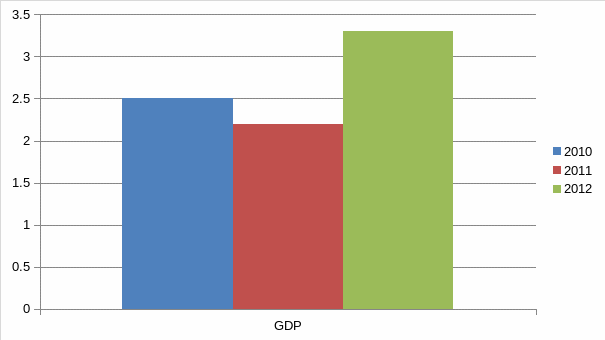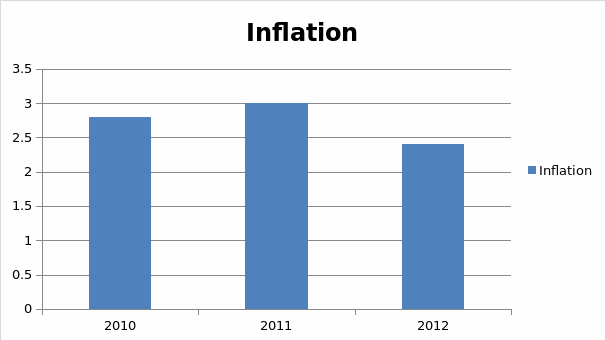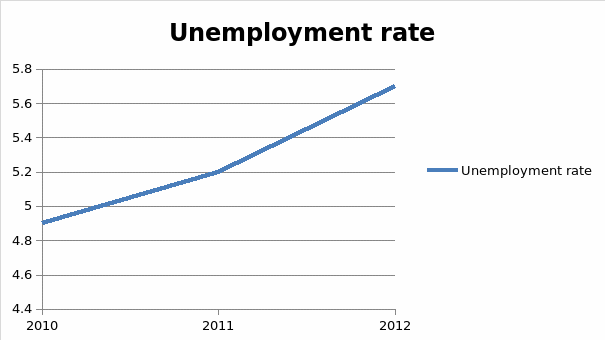The economy of Australia can be considered as amongst one of the largest capitalist economies of the world with an average gross domestic product of 1.5 trillion dollars annually. Australian economy has been rapidly expanding over the last few decades (Nieuwenhuysen et al., 2013). The development in its infrastructure, import, exports and business activities have contributed to the country’s Gross Domestic Product. This document aims to study the economy of Australia. An economy can be analyzed using several economic indicators and this paper aims to use these economic concepts and indicators to analyze the economy of Australia (Nieuwenhuysen et al., 2013). In addition, this paper focuses on major economic policies and strategies of the Australian government to form a discussion on various economic aspects of the economy. The overall economic activity of the Australian economy is determined on the basis of different macroeconomic concepts.
Economy of Australia
The economy of Australia is the seventeenth largest economy of the world having a GDP of 1.57 trillion dollars per year. Agricultural, mining and service sectors are the prominent contributors of the economy (Dyster & Meredith, 2013). The world economic statistic reveals that Australia ranks thirteen among the largest national economies in 2011 and the seventeenth largest economy measured by PP adjustment. The country has a surplus in exports and ranks as the nineteenth largest exporter and importer of the world (Kriesler, 2013).
The major contribution to the Gross Domestic product of the Australian economy is dominated by various service sectors (Nieuwenhuysen et al., 2013). About 68 percent of the GDP is contributed by various service sectors of Australia. In addition, the mining sector represents a 10 percent of the GDP. It has been recorded that agriculture and mining sectors are major contributors to the economy. The major buyer of the country’s products are Far Eastern Asian markets.
Gross Domestic Product

Real gross domestic product 2010-2013
According to the global economic survey, Australia has about 3.4 percent growth in GDP during the 20th century. The main boom in the Australian economy has been observed after the economic liberalization (Dyster & Meredith, 2013). The establishment of the mining industry in the economy has contributed a major part in the expansion and growth of the economy. Real GDP of Australia eventually got great boost over the last few decades. During times of recession when other economies had been striving to survive, the pace of the Australian real GDP had been on the rise (Kriesler, 2013). Analyzing last three years real GDP of the country, it can be stated that the GDP has decreased in 2011 as compared to 2010. However, in 2012, an increase of 1.3 percent in the real GDP has been observed.
GDP Purchasing Power Parity
Per-Capita GDP of Australia is higher than that of United Kingdom and France. Analysis of last three years statistics of the GDP Purchasing Power Parity (PPP) depicts that the country’s GDP has eventually increased in this period (Nieuwenhuysen et al., 2013). A steady increase in the GDP has been observed in the GDP purchasing power parity of the country. The main factors that have contributed to the GDP are the significant performance of the economy and strong economic policies by the government (Dyster & Meredith, 2013). According to the human development Index, the country ranks sixth in terms of per capital GDP PPP (Nieuwenhuysen et al., 2013). The main factor that has contributed to the GDP is the increase of the median wealth in the economy. About 4 times increase in the amount each adult earns has been determined over the last few years.
Inflation

The global economies have been facing high inflation rates. On the other hand, the Australian government has remained strong to maintain the inflation rate (Kriesler, 2013). Analyzing the data and information, it can be observed that the inflation rate of the country has significantly decreased in the last few years. In 2010, the inflation rate remained at 2.8 percent. In 2011, it was 3 percent and 2.4 percent by the end of 2012. This shows that the Australian economic policies have lowered the inflation in the past three years. About 0.6 percent inflation has been lowered by the Australian government policies (Dyster & Meredith, 2013). Over viewing the inflation rate of the country it can be analyzed that the inflation rate in the economy remains between 2 to 3 percent and 4 to 5 percent on the interest based level. This shows that the country has made efforts to raise interest rates as compared to other countries.
Unemployment

Analyzing the data and information provided by the Australian Bureau of statistic it can be determined that the unemployment rate in Australia has remained unchanged at 5.7 percent in June 2013 to July 2013. The estimated unemployment rate for the current year was estimated to be 5.7 percent. The Australian economy is composed of over 2 million workforces of about 40 percent of the Australia workforce. About 60 percent of the workforce in the country are foreigners. According to an economist – Roy Morgan, the unemployment rate in Australia was estimated to reach 10.9 percent by the end of February 2013 (Dyster & Meredith, 2013). But statistics and data depict that the country has made sufficient efforts to maintain the employment level in the country (Dyster & Meredith, 2013).
The unemployment rate of the country has increased too, but at very low rate as compared to other countries. The country has maintained the pace to provide employment opportunities to its citizens and ensure sustainable employment level. The main contribution for creation of employment opportunities in the country are made through foreign investments, tourism and services sector. Furthermore, the export surplus has provided the country to maintain a surplus balance of payment that has further flourished economy of Australia (Nieuwenhuysen et al., 2013). The increasing exports and technologies in the agricultural and mining sector have also created opportunities for the country.
Analyzing the data and information of the economy it can be determined that the Australian economy has maintained pace with challenges of the international economic crisis. Furthermore, the Australian economy has flourished during these times. The government economic policies of the country has increased the efficiency of the economy attracting foreign investors, creating employment opportunities within the country. The country has maintained strong balance of payment through export and imports as the country has export surplus sustains its productivity in international market. The economic policies of the country have lowered personal taxation burden and have provided flexible commercial taxation policies.
List of References
Dyster, B & Meredith, D 2013, Australia in the Global Economy: Continuity and Change, Cambridge University Press, Cape Town.
Kriesler, P 2013, The Australian Economy, Allen & Unwin, Sydney.
Nieuwenhuysen, J, Lloyd, P & Mead, M 2013, Reshaping Australia’s Economy: Growth with Equity and Sustainability, Cambridge University Press, Cambridge.
